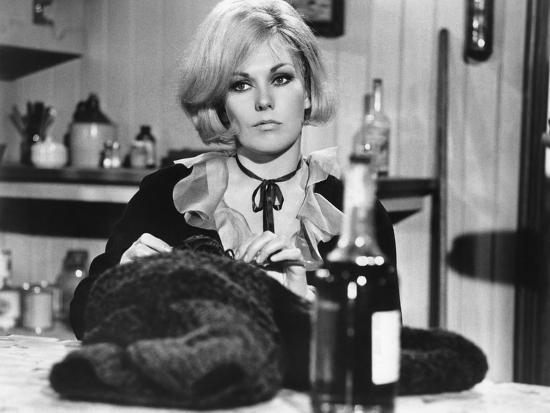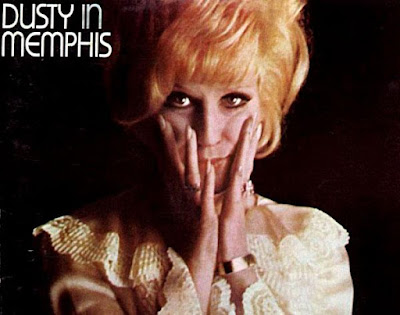 |
| Patricia Neal gives one of her best performances as Olivia Walton in 1971's "The Homecoming: A Christmas Story." |
The
Homecoming: A Christmas Story aired Dec. 19, 1971 as a TV holiday movie. The response from viewers and critics was so strong that
the network gave creator Earl Hamner, Jr. the go-ahead for a series, without a
pilot. The Waltons joined the 1972-3 CBS
lineup and ran nine seasons. After that came six reunion TV movies!
 |
| "The Homecoming: A Christmas Story" was so popular that it became a TV series, "The Waltons." |
Based on Hamner’s
fictionalized novel about his family, The
Homecoming takes place Christmas Eve, 1933. John Walton works during the
week, miles from his Virginia home, and returns each weekend. As the family
prepares for the holiday, the adults anxiously await John’s arrival after
hearing news of a bus crash. Finally, mother Olivia sends John-Boy out to look
for him. Never fear, all’s well that ends well, but not without some twists
along the way.
 |
| Richard Thomas became a breakout star with his role as John-Boy Walton. |
I watched this Christmas
movie as a small town Upper Michigan kid and enjoyed the rural family’s story
so much. I also loved The Waltons when it first aired, but was
a bit disappointed when Patricia Neal didn't continue to play Olivia Walton. Michael
Learned won three Emmys as Olivia, but I thought she played her as a bit of a
stick in the mud. Now, though I still love Neal’s performance, you can see in
certain scenes that she's dragging her leg. A weekly series for a nearly a decade
would have been too much for the post-stroke star. Here, in The Homecoming, Neal is the heart of the
story, and she received an Emmy nomination and a Golden Globe award. As Olivia,
Patricia's strong, fierce, earthy, romantic, and sentimental. And I love Neal’s
relaxed and raspy Kentucky drawl.
 |
| Patricia Neal as Olivia Walton anxiously awaits the return of her husband on Christmas Eve in "The Homecoming: A Christmas Story." |
Richard Thomas’ career
was launched as John-Boy Walton, winning an Emmy for Best Actor in a series for
1973, at age 22. His open face and earnest acting felt realistic and was a cut
above the typical young TV stars. Also, Thomas was a dreamboat to both
sensitive girls and boys.
 |
| Earl Hamner, Jr. with Richard Thomas. John-Boy Walton was Hamner's fictionalized version of himself as a young man. |
The rapport between
Neal’s staunch mother and Thomas’ dreamer son gives this movie resonance. Olivia
is exasperated as to what John-Boy is up to behind locked doors, which leads her
to pound on his bedroom door. As the no-nonsense mother, Neal’s changing
reactions flicker across her face as Thomas’ son pours his heart out about his
dreams as a writer. And Olivia’s firm but loving instructions as she sends
John-Boy out to look for his father is also subtly strong. Thomas as John-Boy shines
as he steels his courage and sets out to find his daddy, in the local lush’s
crate of a car. John-Boy’s thoughts and his eventful evening while he seeks
help are heartfelt and gently humorous.
 |
| Patricia Neal & Richard Thomas' scenes together give "The Homecoming: A Christmas Story" its quiet strength. |
Ellen Corby was an
audience favorite as crusty Grandma Walton, and she reminded me of my
tough-talking Grandma Alvera. Corby won a total of three Emmys for her
role and she was fine from the get-go. Edgar Bergen played Grandpa Walton authoritatively
and straightforwardly, and I must say that a little of the later Will Geer went
a long way.
 |
| Edgar Bergen & Ellen Corby play Grandpa & Grandma Walton subtly in "The Homecoming: A Christmas Story." |
All of the original Walton
kids are here and they do a good job playing believable brothers and sisters. Thomas’
John-Boy has many good moments with his on-screen siblings, even when the big
brother is tired of playing “mother hen.”
 |
| What would be Christmas Eve be without a visit to the Baldwin sisters, candles on the tree and "the recipe" at the ready? |
As with the TV series,
The Homecoming: A Christmas Story has
a great cast of supporting characters. The Baldwin sisters were played here by wonderful
veteran actresses Josephine Hutchinson and Dorothy Pickney. The extended scene
where John-Boy and the preacher visit the moonshine-making sisters on Christmas
Eve is charming and bittersweet. And Cleavon Little is the preacher! From The Waltons to Blazing Saddles, that’s quite a stretch. He’s total charmer here as
Hawthorne Dooley, who helps John-Boy polish his people skills, while trying to
get gas for the boy’s vehicle. Prolific dramatic/comedic actor William Windom plays
the local drunk who is also the Christmas bandit, and he’s terrific as always. David
Huddleston is amusing as the sheriff who nabs him. Woodrow Parfrey portrays
storekeeper Ike Godsey in a one-off performance. Parfrey was a prolific
character actor in TV and movies. I must say that it's a jolt to see Andrew Duggan,
who I remember as silvery-haired, turn up at the finale as Pa Walton with
fluffy, reddish hair!
 |
| Cleavon Little of "Blazing Saddles" fame is a charmer as preacher Hawthorne Dooley. |
I feel The Homecoming is a bit grittier than The Waltons. The story is simple but
filled with feeling, fascinating characters, and based in reality, which
reminded me of Truman Capote's classic, A
Christmas Memory. I felt a connection with John-Boy as both an aspiring
writer and an atypical country boy. One of the sweetest scenes is when Pa
Walton gives John-Boy a stack of Red Chief writing tablets for Christmas.
 |
| A sweet scene when Pa Walton acknowledges his son's writing dreams with this gift. |
The Homecoming: A Christmas Story is set at the height
of the Great Depression, nearly a century ago. This story could be a tonic for
our current fraught times—so that modern viewers can see what hard times really
looked like.
 |
| The exterior scenes of "The Homecoming: A Christmas Story" were actually filmed in Jackson Hole, Wyoming. |
https://ricksrealreel.blogspot.com/2018/12/a-christmas-memory-1966.html
FYI: I put all the movie overflow on my public FB movie
page.
Check it out & join! https://www.facebook.com/groups/178488909366865/
 |
| The only unnatural moment in "The Homecoming: A Christmas Story" is when Andrew Duggan shows up at the finish with fluffy red hair! |











































